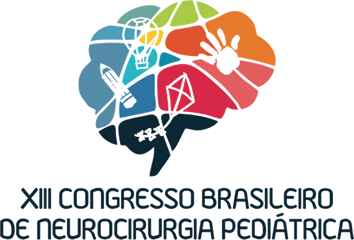Dados do Trabalho
Título
SUBGALEAL SHUNTING FOR POSTHEMORRHAGIC HYDROCEPHALUS - SERIES OF 21 CASES
Objetivo
Posthemorrhagic hydrocephalus comprises the most common complication in those premature neonates whose suffered germinative matrix hemorrhage, and its treatment is still matter of controversies. These infants usually weight less than 1500g and a temporary CSF diversion device is needed. This paper depicts the initial 21 cases of ventriculosubgaleal shunting (VSGS) in prematures who suffered grades III and IV periventricular hemorrhage and hipertensive hydrocephalus.
Materiais e Métodos/Casuística
We analyzed a series of 21 preterm infants who underwent VSGS for posthemorrhagic hydrocephalus between July 2015 and November 2018. The median gestation age was 28 weeks (range 23-32). The median weight was 890 grams (range 625-1615). The mean span of time harboring de VSGS was 59,3 days (range 39-78). This paper is not addressed to explain the surgical technique performed.
Resultados
The cases were studied for: 1) revision of the system: 4/22 subjects (19%) had 2 system revisions each due to obstruction; 2) shunt related complications: 6/22 infants (28,5%) had positive CSF culture and the VSG converted to EVD and further VP shunt. (2 of these showed previous CSF fistula through the wound); 4) convertion to VP shunt: 11/22 children (50%) showed persistent hydrocephalus at further investigation, and underwent to VP shunt after stable clinical condition and weight higher than 2000g. One death occurred in a very low birth weight subject who developed severe thrombocytopenia and pulmonary hemorrhage.
Discussão e Conclusões
The main goal about treating these very low weight infants is prevent infection anyway. Since the VSGS in this study show low rates of infection (28,5%), one must point out that it could be an excellent tool to decrease intracranial pressure while these infants are too small for definitive treatments. Furthermore the Vp shunt conversion rate (50%) is similar to another devices as Omaya Reservoir and EVD technique with lower handling of the system. Thus VSGS is a good alternative method to treat posthemorrhagic hydrocephalus in preterm infant whose need a temporary shunt device. The low rate of severe complications and encouraging results about persistent hydrocephalus should guide further investigation and larger cases series.
Referências bibliográficas
1. Wellons J et al : A multicenter retrospective comparison of conversion from temporary to permanent cerebrospinal fluid diversion in very low birth weight infants with posthemorrhagic hydrocephalus. J Neurosurg Pediatrics 4 :50–55, 2009.
2. Robinson S : Neonatal posthemorrhagic hydrocephalus from prematurity: pathophysiology and current treatment concepts. J Neurosurg Pediatrics 9:242–258, 2012
3. Limbrick Jr, D. et al : Neurosurgical treatment of progressive posthemorrhagic ventricular dilation in preterm infants: a 10-year single-institution study. J Neurosurg Pediatrics 6: 224–230, 2010
Palavras Chaves
Posthemorrhagic Hydrocephalus; Subgaleal Shunting; prematurity
Área
Neurocirurgia Pediátrica
Instituições
UNIVERSIDADE ESTADUAL DE LONDRINA - Paraná - Brasil
Autores
ALEXANDRE CASAGRANDE CANHEU, MARCIO FRANCISCO LEHMANN, SERGIO MURILO GEORGETO, FELIPE INÁCIO FERREIRA DA SILVA, BRUNO LOOF , FRANCISCO SPESSATO PESENTE
